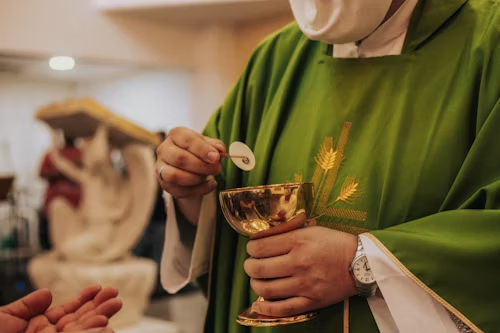As Christians, we live lives oriented towards worshiping God. When did human worship actually begin? How did people in Old Testament times worship, and what does true worship mean? Recently, Professor Liu, a theologian specializing in worship studies, shared insights into “Worship Studies” in a lecture.
Humanity’s First Act of Worship
Professor Liu introduced that the earliest act of worship in human history was recorded in Genesis, when Cain and Abel offered sacrifices to the Lord, with Cain giving the fruits of the ground and Abel offering the firstborn of his flock and their fat.
God favored Abel and his offering but did not accept Cain’s. “God can either accept or reject our offerings, showing that God’s accepted one’s sacrifices depends on whether one’s actions and life are righteous and good,” Liu said.
The Uniqueness of Ancestors’ Worship in the Old Testament
Liu continued with a comparison to help the audience understand how the worship of Old Testament ancestors differed from that of pagan nations.
In the Old Testament period, many religions existed, and pagans served many gods. Their gods were distant and did not respond. Their gods were inaccessible and physical in form, and worship was mainly done to fulfill their personal desires.
But the Old Testament ancestors served the one true God who took the initiative to reach out to them. This God had no visible form, and His followers were called to live a life solely obedient to His Word, and offer the sacrifice of thanksgiving. Even in suffering, like Job, he would still worship.
Two Forms of Worship in the Old Testament Era
Liu then explained the two main forms of worship developed by the people of Israel, God’s chosen ones, during the Old Testament era.
The first form of worship centered around the priesthood. This worship occurred only in the Jerusalem Temple, where people could encounter God, not among the congregation. Believers encountered God in the sacred ceremony performed through the mediator.
Contrary to the priest-centered worship, a second form of worship emerged in the Jewish synagogue, which was a people-centered worship that emphasized the personal lives of believers as an act of worship.
Synagogue worship centers on congregational worship, with people offering spiritual sacrifices. At this point, worship was not just a sacred ritual but obedience to God’s Word and faithful adherence to His commandments. People can worship God through feeding the hungry, caring for orphans and widows, and aiding the oppressed.
Both worship styles evolved throughout the Old Testament period.
"The synagogue worship profoundly influenced Christian worship," Liu said. The early church established its own worship communities, mainly adopting the synagogue’s structure of prayer, scripture reading, and preaching. Additionally, the synagogue tradition of seeking and understanding God’s will, offering one’s life as a living sacrifice, was adapted in Christianity.
Extending to All Areas of Life, Worship is Like A Feast with God
The synagogue worships valued substance over form, extending worship into all areas of personal life, with life itself becoming worship.
Liu concluded, “God desires true and heartfelt worship from us. He wants us to remember the spirit and essence of worship. Worship is no longer an empty ritual nor a sacrifice to a distant God; it is a feast we share with Him.”
- Edited by Katherine Guo, & translated by Abigail Wu












